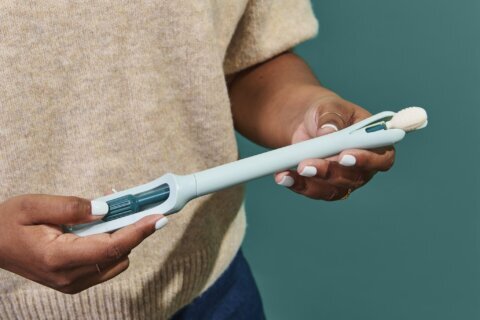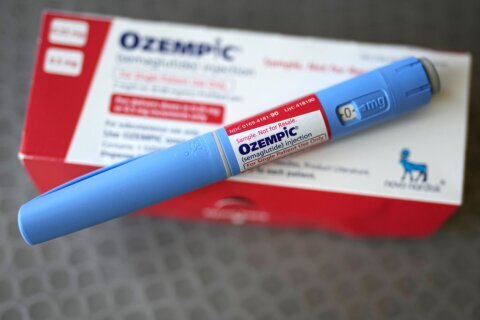On World Stroke Day, it’s a good time to learn the warning signs of a stroke, and a D.C.-area doctor explains how a simple acronym can help save a life.
Oct. 29 is known as World Stroke Day, and the American Stroke Association, which is a division of the American Heart Association, wants you to know the importance of knowing the signs of a stroke, so you know when to get immediate medical attention.
A stroke, sometimes called a brain attack, happens when something blocks blood supply to part of the brain or when a blood vessel in the brain bursts. When this happens, parts of the brain become damaged or dies.
It’s a leading cause of death in the U.S. and a major cause of serious disability for adults, according to the Centers for Disease Control and Prevention.
Dr. Amie Hsia is the medical director of the Comprehensive Stroke Center at MedStar Washington Hospital Center in D.C. She said the acronym FAST is something that can be used to help people remember the stroke signs and symptoms.
The F stands for face; look for drooping of the face or one side not moving as well as the other, Hsia said.
The A stands for arms. “Ask them to just hold up their arms up in the air and see if they have trouble raising one of their arms, or if one arm falls to their side,” Hsia said.
The S is for speech. Is there slurring of speech? Do they have trouble coming up with the right words?
“If they seem to be having trouble understanding what you’re saying, all of these things are potential signs of stroke,” Hsia said.
And the T stands for time — because stroke is definitely an emergency. “It’s something that should be the trigger to call 911 and get emergency care and be brought to the hospital immediately,” she said.
Not all these things warning signs are necessarily occurring together, and it’s important to remember that a stroke doesn’t always present in the same way, which can make it difficult to identify that someone is having one.
“That’s why we use that FAST acronym as representing some of the most common symptoms. But again, they don’t necessarily all happen together. So not all strokes present so dramatically,” Hsia said.
And how you arrive at the hospital can affect how quickly you get treated. Hsia said that its been studied that people who arrive to an emergency department by ambulance get the care or attention that they need more quickly.
“It’s understandable. The expectation is that if you could be dropped off by a family member or friend, whatever is happening to you is assumed to be less critical than somebody who has arrived by ambulance,” Hsia said.
Research shows that while most people say they would call 911 in a stroke emergency, real-world data shows that up to 75% of those experiencing a stroke first called friends or family, an American Stroke Association news release said.
Stroke is treatable and that’s why it’s important to call 911 right away if you think someone is having a stroke — because getting fast treatment is important in preventing death and disability, the CDC said.
“The reason for the emergency care is because there are treatments that are available, particularly in the blockage type of stroke at this point, where we can potentially restore the blood flow and get patients back to being normal, independent, and really get them home as soon as possible to be with their families,” Hsia said.
These treatments include clot-busting medications and devices that can remove a clot.
“The sooner a person can present to a hospital from the time the symptoms are noted, the more potential treatment options that person will have available that we may be able to offer,” Hsia said.
Each year, approximately 800,000 people in the U.S. experience a stroke, and worldwide, 1 in 4 will experience a stroke in their lifetime, according to the American Stroke Association.
“Stroke can happen to anyone of any age. And so just because you see somebody who may be young or you look at them and you think, ‘You know, that person does not look like someone who could have a stroke.’ All of that would be incorrect because anybody can have a stroke,” Hsia said.
However, the risk of stroke does increase with age, and having medical problems can contribute to a stroke. These include risk factors such as high blood pressure, high cholesterol, smoking or diabetes, as well as chronic medical problems, such as abnormal heart rhythm, specifically atrial fibrillation.
For more information about stroke warning signs, prevention and recovery, visit the American Stroke Association’s website.
WTOP’s Kristi King contributed to this report.








